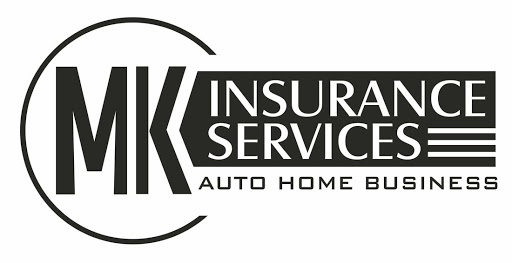WE KNOW RESIDENTIAL CONSTRUCTION LAW
Lovein Ribman is a Texas based construction law firm led by Board-Certified Construction Attorneys (an honor held by only 135 attorneys in the state) who represent Property Owners with claims against Homebuilders, Remodel Contractors, Pool Contractors, and Subcontractors of every trade in every county throughout the entire state of Texas. Our firm handles every type of dispute that can arise during or after the construction, purchase, or remodel of a home, to include claims for defective workmanship; failure to construct the house in accordance with the plans, specifications, or applicable codes; failure to obtain permits; delayed Project completion; Project abandonment; payment and accounting disputes; mismanagement of Project funds; unauthorized change orders or disputed change orders; a Contractor’s failure to pay Subcontractors/Suppliers; mechanic’s Lien threats and/or removal of invalid Liens; disputes over increased Project costs and escalation provisions; Contract termination; and new tract/production home Contract cancelation and demand to return deposits. If you are a Homeowner who is presently in a residential dispute or are anticipating one, please contact us to schedule a consultation by calling us directly or calling our toll-free number at (888) 368-2483, or by submitting the Contact Form. Read on to learn more about the most common residential disputes and how we assist our Clients with resolving them.
TYPES OF RESIDENTIAL PROJECTS AND COMMON DISPUTES
Tract or Production Home Still Under Construction: The primary characteristics of a tract or production home still under construction include: (1) the Purchasers do not own the land at the time they enter into the Purchase Contract and will not become the Homeowners until construction is completed and the purchase price is paid at closing; (2) the Purchasers pay a small earnest money deposit and typically the costs of any upgrades at or around the time the Purchase Contract is executed; (3) the architectural design of the house is predetermined and only slight modifications can be made; and (4) the Builder is typically building multiple houses within a single community. Texas’ largest tract/production home Builders include DR Horton, Lennar Homes, KB-Homes, Perry Homes, Highland Homes, Pulte Homes, and Toll Brothers; but there are hundreds more. The strategies and methods used to resolve disputes that arise during the construction of a tract/production home are unique to this type of Project because the Purchasers do not own the Property and therefore their rights and remedies are limited by the terms of the Purchase Contract. Additionally, the Purchase Contract is typically so one-sided in favor of the Builder, that most common rights have been waived. If the Purchasers fail to close and take possession of the Property, then they typically forfeit their deposits in exchange for the Builder waiving and releasing all other claims and damages. In contrast, if the Purchasers can demonstrate that the Builder is in material default and either fails or refuses to cure the default, then the Purchasers’ sole remedy is return of their deposits in exchange for waiving and releasing all other claims against the Builder. The typical disputes which occur during the construction of a tract/production home include the following:
- Failure to Timely Complete Construction of the Home: By far, failure to timely complete construction of the home is the most common complaint we receive from new home tract/production Purchasers. The delay is typically the result of the Builder’s failure to timely commence construction or failure to consistently prosecute the work. The biggest hurdle Purchasers face in raising this type of dispute as a breach of Contract, is that the Contract typically does not guarantee a completion date and at best, might provide an estimated date of completion, along with the express statement that the date of completion is not guaranteed. Moreover, even if a Sales Representatives or Project Manager has verbally promised a completion date, the Contract typically states that such statements do not modify the Contract and are not enforceable against the Builder. Consequently, delayed completion is typically not a breach of Contract. However, if the delays are extreme and the Builder is clearly not consistently providing labor/materials to the Project, without justification, then it may be possible to argue the Builder has essentially abandoned the Project and is in breach. Depending upon the terms of the Contract, we typically send the Builder a Notice of Breach & Request to Cure at this stage of the Project to pressure the Builder and document the delay, which typically has a favorable result.
- Failure to Follow the Plans and Specifications and Provide Upgrades: Given that the Builder is not focused on building just one house and the high turnover in Project Managers, it is common for the Builder to fail to construct the house in accordance with the Purchasers’ expectations. The Contract typically allows the Builder to substitute materials with like or similar materials and slightly deviate from the plans/specifications. However, if the failure is more substantial, then it is likely a breach of the Contract and possibly a basis to terminate the Contract if the Builder refuses to correct the issue.
- Defective or Poor Workmanship: Most tract/production home Purchasers discover late in the process that the quality of the labor/materials being used for their home is in stark contrast to that of the model home. Builders typically include a provision in the Contract which expressly states that the model home is not a true representation of the actual home being built and require the Purchasers to release the Builder from liability for false representations. However, if the quality of the home does not meet “industry standard”, is in violation of the applicable codes, or is clearly defective, then the Builder is likely in breach of the Contract. The Purchaser should retain a home inspector or a forensic inspector who specializes in the type of defect to perform an inspection and prepare a report with findings. A Notice of Breach of Contract & Request to Cure, along with a Chapter 27 Demand (discussed below) should be sent to the Builder.
- Demand to Accept the Property with Defective and Incomplete Work: As a practice, tract/production home Builders expect Purchasers to close on the home even though some items have not been completed, are defective or damaged. In fact, most Contracts expressly state that the Purchaser is required to close despite the defective or incomplete items and failure to do so is a breach of the Contract. These unresolved items then get placed onto a “punch list” to be dealt with at a later time. The problem with this approach, is that once the Purchasers close the Builder tends to ignore them and the issues do not get timely resolved or resolved at all. The punch list items then turn into warranty claims and when they are still not resolved, the Purchasers are forced to contact an attorney to invoke the Chapter 27 process discussed below. As such, if you are in this situation, now is the time to stand firm and force the Builder to correct as many of the problems as possible before closing. However, you may have to retain an attorney to send a formal Notice of Default.
- Price Increases, Reductions and Terminations: In 2021 – 2022, the price of construction and the price of homes rose dramatically over a short period of time. Builders who had entered into Contracts in 2020, realized they were missing out on increased profits or could not afford to build the house for the Contract price, and cancelled thousands of Contracts leaving Purchasers without homes. Builders who took this approach, relied upon a common provision in these types of Contracts that allow the Builder to terminate the Contract for convenience and without cause. During the first half of 2023, interest rates dramatically rose over a short period of time. The result was higher monthly mortgage payments and a severe reduction in demand for new tract/production homes. This caused Builders to reduce purchase prices and offer incentives to increase demand. This was great for Purchasers who had not yet entered into a Contract and devasting for those who had. Unfortunately, since these types of Contracts are very Builder one-sided, these Purchases did not have a direct way to back out of the Contract. However, a potential way out of the Contract might be to identify an unrelated breach and use that to cancel the Contract. We have seen Builders respond to this approach by offering incentives to induce the Purchasers to close. We have also seen Purchasers terminate the Contract, waive their deposits, and then repurchase the same or similar house for a lessor price because it was economically beneficial to do so.
Custom Home Still Under Construction: The primary characteristics of a custom home still under construction are: (1) the Homeowners own the Property on which the house is being built and typically own it before they retain the Builder (there may be a mortgage on the land); (2) the Property owners have the right to select and hire any Builder they desire; (3) the Property owners had the opportunity to negotiate the terms of the Contract, including whether the Contract Amount would be a Stipulated Sum (fixed price) or the “Cost of the Work plus a Builder’s Fee”; (4) the Homeowners typically obtain a construction loan to fund the Project and the lender typically processes the Builder’s payment applications throughout the course of the Project; and (5) the Homeowners typically have the right to terminate and replace the Builder, depending upon the terms of their Contract and with Lender approval. The typical disputes which occur during the construction of a new custom home include:
- Disputes Over Project Delays, Completion and Abandonment: It is rare for a construction Project to be completed within the allotted time. Project delays occur for a myriad of different reasons, some are outside of the parties’ control and are therefore excusable (g., persistent bad weather, material supply delays, or delays with obtaining proper permitting), but most serious Project delays are the result of poor Project management or an illegal misappropriation of Project funds resulting in the Builder’s inability to pay subcontractors, suppliers and laborers to continuously prosecute the work leading to termination or abandonment. If your Project is delayed, the first step is to review your Contract to determine the agreed upon completion date. Most Builder industry form Contracts, e.g., the Texas Association of Builders (“TAB”) do not provide a date certain for completion and at best provide an estimated deadline with the express caveat that a completion date is not guaranteed. Moreover, this same one-sided form Contract contains a provision which requires the Property Owners to waive their right to recover indirect or consequential damages (e.g., increased monthly storage fees, rental fees, or increased interest rates) caused by the delays. However, there is potentially a way to circumvent a Builder’s Contract which does not contain a completion date. If there is a construction loan, then the Lender should have required the parties to execute their construction agreement typically referred to as a “Mechanic’s Lien Contract” or a “Residential Construction Contract with Lien Transfer”. This Contract should contain a date of completion which corresponds to the maturity date of the construction loan. Most significantly, the Lender’s Construction Contract should expressly state that the Builder’s Contract is incorporated into it by reference and to the extent the terms of the two Contracts conflict, the Lender’s Contract controls. If neither Contract contains a completion date, then the law imposes a reasonableness standard for completion of the work. The second step is to send the Builder a Notice of Default & Request to Cure, placing the Builder on formal notice of default and demanding a completion schedule. The third step may be to terminate the relationship and retain a new Builder to complete the work, although this typically creates a whole new set of problems.
- Disputes Over Increased Project Costs: Most custom home Builders do a poor job estimating overall Project costs. Some Builders do so intentionally to induce you into the Contract, while other Builder’s fail their due diligence in obtaining bids or forecasting price increases. Whether the Builder has the legal right to pass on the increased costs depends upon the terms of the Contract. Step one: review the Builder Contract to determine whether the Contract Price is a stipulated sum or the cost of the work plus a Builder’s fee. If a stipulated sum, the Builder typically cannot pass on price increases unless: (1) the Property owner has modified the scope of work or exceeded the amount of an allowance, or (2) the Contract contains an escalation provision or an unforeseen conditions provision allowing the Builder to pass on unexpected price increases for certain materials or for unforeseen conditions. When the Property owner is obligated to pay for the “cost of the work plus a Builder’s fee”, the Builder can legally pass on the increased costs unless the Contract contains a guaranteed maximum price (“GMP”) for the overall Project costs. Additionally, most Contracts require the Builder to provide advance written notice of unexpected cost increases once discovered or to obtain a fully executed change order before the costs are incurred and can be passed on to the Property owners.
- Disputes Over Project Accounting: Custom home Builders are notorious for poor record keeping and for withholding proof of Project costs. When the Contract price is for a stipulated sum, the Builder typically cannot pass on increased costs (unless one of the above exceptions apply) and therefore assumes the risk of price increases. If prices increase, the Builder makes less profit. If prices decrease, the Builder makes more profit. As such, with stipulated sum Contracts, Builders typically regard Project costs as confidential. Primarily because they do not want the Property owners to know their actual profit margin (typically because it is much higher than represented or than the Property owner would expect). And Property owners should not care, as long as the Builder produces a quality product in exchange for the agreed upon Contract price. However, when a Builder attempts to increase a stipulated sum Contract price or if the Contract price is for the “cost of the work plus a Builder fee”, then the Builder is obligated to provide proof of the increased costs or the overall Project costs.
- Disputes Over Unpaid Subcontractors and Material Suppliers (Lien Threats): It is not uncommon for the Property owners to receive at least one Notice of Claim (Pre-lien Notice or Intent to Lien) from their Builder’s Subcontractors or Suppliers during the Project. If the Property owners receive a Notice, the first step is to discuss the claim with the Builder to learn why the Claimant has not been paid. Sometimes it is for a legitimate reason, g., the work or material is defective and needs to be corrected, but most of the time it is not. The second step is to withhold the amount of the claim from the Builder’s future payments until the Builder has provided proof that the claim has been resolved. Pursuant to Texas Property Code, Chapter 53, the Builder is required to resolve the Lien claim and defend/indemnify the Property owners from any damages caused by the claim. Moreover, most well drafted Contracts expressly state that the filing of a Lien is an Event of Default and if not timely cured, allow the Property owners to terminate the Contract. Additionally, if the Property owners have already paid the Builder for the Subcontractor/Supplier’s labor/material and the Builder knowingly or with the intent to defraud diverted the funds from the Project to pay for non-Project related debts, the Builder can be prosecuted for a third-degree felony. Lien claims must be resolved before the Lender will allow the construction loan to be converted to a conventional loan.
- Disputes Over Poor Workmanship or Failure to Follow Plans/Specifications: It is difficult to locate a qualified Builder and even if you think you have found one, mistakes and disagreements will still occur. If the work does not conform to the plans/specifications, then the Builder is likely in breach of the Contract. If the work is of poor quality, defective, or not functioning as designed, then the Builder again is likely in breach of the Contract. When any of these events occur, the first step is to bring them to the Builder’s attention and objectively discuss how they can be economically corrected with the least disruption to the overall Project. If doing so does not resolve the issues, then there is a dispute and a material breach of the Contract. Now it is time to consult with a construction attorney who can review and explain the applicable Contract provisions and recommend options and a strategy on how to proceed. Typically, one of the recommendations will be for the Property owner to retain a construction expert who specializes in the type of trade/work in dispute to perform an inspection and prepare a report. The report should identify: (1) the defects or nonconforming work, (2) any code or industry standards violated, (3), the proper way to correct the defective or nonconforming work, and (4) the cost to repair the work. This report will provide the Property owner with support for its claim and a better understanding of the problem and how it can be resolved.
- Disputes Over Project Close Out and Final Releases: If there have not been major disputes throughout the course of Project, then the last 75 days are where they tend to occur. As the parties head toward Project close out, expectations and tensions begin to rise. The Property owners are typically concerned with converting their construction loan to a conventional loan (which has likely been extended more than once), defects that were brought to the Builder’s attention months ago that have still not been corrected, and how to resolve accounting and payment disputes. On the other hand, the Builder is likely experiencing problems with coordinating trades, city inspections, is tired of receiving customer feedback/complaints, and is ready to move on to the next Project. It is hard to say who has the upper hand at Project closeout because there are laws which protect both sides as they attempt to gain leverage to resolve their respective concerns. One of the strongest rights Property owners have, is the good faith exception to payment under the Prompt Payment Act which allows them to withhold 110% of any amount in dispute from the Builder’s final payment. The disputed amount may arise from accounting errors, overbilling/offsets, paying unauthorized work, or the cost to correct defective work. In turn, the Builder has the right to withhold signing the Final All Bills Paid Affidavit or Final Lien Waiver & Release (documents the Lender will require to close out the loan) or to record a mechanic’s Lien against the Property. Project closeout is generally the time to consult with a construction attorney to obtain a better understanding of the parties’ rights and obligations, and recommendations for resolving final disputes.
Completed Home Construction Disputes (Custom or Tract): A “completed home” is any home that is no longer under construction nor being remodeled or repaired because of an unexpected event, e.g., broken pipes, tornado or hurricane damage, or hail/wind damage (see below for “Remodel and Repair Project Disputes). It can be a tract, production or custom-built home and the Homeowners can be the original purchasers or subsequent purchasers. The most common completed home dispute is:
- Construction Defects: If it is a new home, the defect may have been discovered during construction but was not repaired prior to closing and instead placed on a punch list with the Builder’s promise to correct the problem within 30 – 60 days. Or it is a latent defect that was not discovered until shortly after closing or several years after occupying the home. Regardless, if you are a Homeowner reading this, you have likely already made a warranty claim, the request was delayed, ignored or denied and you are now researching your legal rights and what to do next.Builders want Homeowners to believe that their sole obligation and liability is the express warranty, and although sometimes that is true (i.e., for some low-end tract or production home Builders), typically it is not. That’s because implied within every home purchase or construction Contract is the promise that the house will be built: (1) in a good workmanlike manner and that it is habitable; (2) in accordance with the plans and specifications; and (3) in compliance with all local, state and international building codes (even if constructed outside of the city limits). As such, if you purchased the home directly from the Builder and there are defects, then your primary claim is likely for breach of contract, not necessarily for breach of warranty. The two exceptions to this general rule are if the Builder required the Homeowners to waive all other claims in exchange for the express warranty or if the Contract contains an “AS-IS” provision. Express warranties, unlike Contractual implied obligations, are intentionally limited by the Builder in time (1-2-10 years) and scope (only certain types of defects are covered during the warranty periods) and therefore are not as strong as a breach of Contract claim. Regardless, Homeowners should still assert and pursue a formal breach of warranty claim, but typically the breach of Contract claim is far superior. Although subsequent purchasers have the right to bring a claim against a Builder for construction defects, the claim will not be for breach of Contract since they did not purchase the home directly from the Builder. Instead, a subsequent purchaser’s primary claim will be negligence and if the express warranty was transferred, then a claim for breach of express warranty.
If the defect has been reported to the Builder and/or to a third-party warranty company and has still not been resolved, then it is time to consult with a construction attorney who can review and explain the applicable Contract provisions and recommend options and a strategy on how to proceed. Typically, one of the recommendations will be for the Property owner to retain a construction expert who specializes in the type of trade/work in dispute to perform an inspection and prepare a report. The report should identify: (1) the defects or nonconforming work, (2) any code violations or industry standards violated, (3), the proper way to correct the defective or nonconforming work, and (4) the cost to repair. This report will provide the Property owner with support for its claim and a better understanding of the problem and how it can be resolved.
With the report in hand, the next step is to invoke Chapter 27 of the Texas Property Code, also referred to as the Residential Construction Liability Act (see below for a discussion of the Chapter 27 process), which is a mandatory step in bringing a claim against a Builder for defective workmanship. Typically, it is advisable to retain a construction attorney to either consult or assist with this process. If the claim is not resolved through the RCLA, then the next step would be to initiate binding arbitration or civil litigation, depending upon which is required by the Contract.
Residential Remodel Project Disputes: The primary characteristics of a residential remodel Project, excluding outdoor projects (which are discussed below), include: (1) interior and exterior improvements to the structure, e.g., foundations, kitchen remodels, bathroom remodels, room additions, floor replacements, painting, interior mechanical systems, windows, doors, and appliances; (2) interior damage to the structure caused by water or fire, or some other occurrence typically covered by the Homeowner’s Property insurance; or (3) repair of damage caused to the roof system, fences, and HVAC units caused by wind, hail or some other occurrence typically covered by the Homeowner’s Property insurance. Out of all the various categories of contractors, residential remodel general contractors are by far on the lowest rung of the ladder when it comes to moral character, business acumen, skill, and organization. This is because Texas does not require residential remodel general contractors to be tested, licensed, bonded or even insured. As such, the bar to entry is extremely low, such that anyone can legally call themselves a “residential remodel contractor” and start a residential remodel company. Some misrepresent their level of skill, knowledge, and experience knowing that it cannot easily be verified. Their Contracts, if they even have one, are typically ambiguous, incomplete and lack legal terms and the required residential remodel mandatory Notices. Their bids are typically lower than what the actual Project costs turn out to be, either because they failed to do their due diligence in determining the full scope of work, material and labor costs, or the time to complete the work, or because they intentionally provided a low bid to induce the Homeowner into signing the Contract with the intent to increase the price after receiving the initial deposit. Given this, most residential remodel Projects are doomed before they even begin. The typical disputes which occur during residential remodel Projects include:
- Disputes Over Work Performed Without Permits and Licenses: Most residential remodel Projects located within city limits will require city approval (e., a permit) before the work begins and city inspections for code compliance during and upon final completion of the work (i.e., final inspection). The types of work which typically require a permit include roof removal and replacement, room additions, removing walls, replacing windows, new pool construction, exterior decks, electrical, plumbing, and HVAC replacement. Additionally, any Subcontractor performing electrical, plumbing, structural, or HVAC work must be licensed by the governing Board for that specific trade and present that license to the city in order to obtain a permit. Since a lot of residential remodel general contractors use unlicensed Subcontractors (because it is cheaper and easier to find these workers), they intentionally ignore the permitting process unless the Homeowners raise the issue before or during construction. If the city discovers that unpermitted work is being performed, it will shut down the Project until a permit is obtained and the work is inspected. If the work has been concealed (e.g., new wiring behind new drywall), then the city will typically require the work to be removed and redone at the Homeowners’ expense. Although city inspections do not guarantee the work has been done correctly, inspections should decrease the likelihood that the work was improperly performed and in violation of code requirements. If work is completed without a permit, when the Homeowners list their house for sale, they will be required to disclose the unpermitted work (or risk being sued for failing to disclose) on the standard TREC Disclosure Statement, which could result in a diminution of the overall Property value. Another common issue that arises regarding permits, is that only the Contractor who obtained the permit can request inspections. Additionally, permits expire and typically only the party who obtained the permit can request an extension. If a dispute arises between the parties, then the Contractor will typically withhold requesting an inspection or renewing the permit as leverage for resolving the dispute.
- Disputes Over Payment: The most common payment disputes arise when the Contractor: (1) is paid money in advance of doing the work and never returns to the Project (theft) or substantially delays performance; (2) demands payment when payment is not due or when the work performed is defective and not corrected; (3) attempts to pass on cost overruns without first obtaining the Homeowners’ written approval or without the Contractual right to do so; or (4) fails to pay Subcontractors or Material Suppliers who in turn threaten to record a mechanic’s Lien against the Property. The Contractor’s lack of moral character and business management skills can be the root cause of payment disputes. Consequently, most residential remodel general Contractors live job-to-job and take money from the next job to pay for the labor/materials for the last job. Contractors who use Project funds for anything other than Project expenses violate the Texas Trust Fund Statute and can be criminally prosecuted for a third-degree felony and held personally liable for repaying the diverted funds to the Homeowners. Moreover, pursuant to the same statute, for Projects where costs will exceed $5,000.00, the Contractor is required to maintain and deposit the Homeowners’ funds into a checking account wherein the bank labels the statements with the title “construction account”. Homeowners have the right to review statements from this account to confirm the funds paid were used for Project related debts. Failure to maintain this account is a misdemeanor. Further, under the Texas Prompt Payment Act, Homeowners have the legal right to withhold 110% of any amount in dispute from a Contractor’s progress or final payment, upon providing the Contractor with proper Notice as to why the funds are being withheld. Additionally, if the Property is the Homeowners’ primary residence (homestead), then no one has the legal right to record a mechanic’s Lien against the Property unless there is a written Contract executed by both spouses. Moreover, Subcontractors do not have Lien rights if the general Contractor has not satisfied this Contract requirement and if they do not first timely and properly serve a Notice of Claim before recording the Lien. However, the County Clerk will not function as a “gatekeeper” to prevent the recording of invalid Liens and as such, even if the Contractor or Subcontractors are not owed any money or fail to follow the strict Lien laws, the Clerk will still accept the Lien for filing.
- Disputes Over Project Delays and Abandonment: Projects can be delayed for several legitimate reasons, such as extended or unexpected bad weather, the unavailability of qualified Subcontractors, or material supply chain disruptions. However, those types of delays do not tend to last very long and/or are known and discussed before the Project begins. In contrast, when there are extended periods of time where no work takes place and it is difficult if not impossible to reach the Contractor, then the delay is typically because the Contractor ran out of money. The lack of funds could be because the Contractor used the Homeowners’ money to pay non-Project related debts or the Contractor substantially underbid the work. When either event is the cause, sometimes the Contractor will return to the Project after obtaining a deposit from the next upcoming Project which it will use to complete the current Project, thereby repeating the cycle. When a substantial delay occurs, retaining a qualified construction attorney to prepare/send a stern Notice of Breach & Request to Cure Demand Letter to the Contractor may be the best way to increase the probability that the Contractor will return to the Project. If a Contractor abandons the Project or is terminated for cause prior to completion, then the Homeowner may have the right to recover the increased costs and reimbursement of attorneys’ fees from the former Contractor.
- Disputes Over Defective or Non-Conforming Work: Disputes over defective or nonconforming work (e., work not in accordance with the plans, specifications or the Homeowners’ request) typically arise during the Project but might also be discovered sometime after completion (e.g., latent defects) upon the defective condition failing and causing resultant Property damage. For example, improperly installed windows that leak after a heavy rain causing damage to the drywall and floors. If the Parties are unable to informally resolve the problem, then the next step might be to consult with a qualified construction attorney. The Homeowners should retain a forensic expert who has knowledge and experience with the type of defect in dispute to perform an inspection and prepare a report. The report should identify: (1) the defects or nonconforming work, (2) any code violations or industry standards violated, (3), the proper way to correct the defective or nonconforming work, and (4) the cost to repair. This report will provide the Property owner with support for its claim and a better understanding of the problem and how it can be resolved. With the report in hand, the next step is to invoke the Residential Construction Liability Act (see below for a discussion of the RCLA process), which is a mandatory step in bringing a claim against a Builder for defective workmanship. Typically, it is advisable to retain a construction attorney to assist with this process. If the claim is not resolved through the RCLA process, then the next step would be to initiate binding arbitration or civil litigation, depending upon which is required by the Contract.
Pool, Outdoor Living Spaces and Landscaping Disputes: The primary characteristics of a pool, outdoor living space and/or landscaping Project are: (1) new or remodel pool construction, (2) new outdoor living spaces, to include patios, kitchens and sports courts (3) pond or lake construction or repair, or (4) driveway and sidewalk repair or construction. The typical disputes which occur during these types of Projects include:
- Design Defects: Before Homeowners sign a new construction pool Contract, the pool company typically prepares a beautiful rendering or mockup of the pool so the Homeowners can visualize the final product in their own backyard. Despite that, the final product rarely looks or functions as depicted in the drawings. In fact, most well-drafted pool Contracts expressly state that the renderings are not intended to be a true representation of the final product and that the customer waives any claims against the Contractor for deviations in the actual construction of the pool. Additionally, even though the Contract typically incorporates the plans and specifications, it is so common for pool contractors to inadvertently deviate from the plans regarding the pool’s depth, width, and length, that most pool Contracts allow for a 10% deviation. If the deviation is more than 10%, then the Contract typically contains a formula for calculating the limited compensation the Homeowners are entitled to recover for the deviation. The first step in prosecuting a claim for design defects, it to review or have a construction attorney review the terms of the Contract for provisions that waive or limit the Homeowners’ recovery for design defects. The second step is to retain a forensic pool expert to provide an opinion in support of the claim. Once that has been done, then the next step is typically initiation of the Chapter 27 RCLA process.
- Disputes Over Defective Workmanship: Disputes over defective work typically arise during the Project but might also be discovered sometime after Project completion (g., latent defects). If the Parties are unable to informally resolve the disputed issues, then the next step should be to consult with a qualified construction attorney to review the Contract, analyze the claim, and recommend a course of action. The Homeowners should also retain a forensic pool expert to perform an inspection and prepare a report. The report should identify: (1) the defects or nonconforming work, (2) any code violations or industry standards violated, (3), the proper way to correct the defective or nonconforming work, and (4) the cost to repair. This report will provide the Homeowners with support for their claim and a better understanding of the problem and how it can be resolved. With the report in hand, the next step is to invoke the Residential Construction Liability Act (see below for a discussion of the RCLA process), which is a mandatory step in bringing a claim against a pool Contractor for defective workmanship. Typically, it is advisable to retain a construction attorney to assist with this process. If the claim is not resolved through the RCLA process, then the next step would be to initiate binding arbitration or civil litigation, depending upon which is required by the Contract.
- Disputes Over Work Performed Without Permits and Licenses: All new pool construction located within city limits will require city approval (e., a permit) before the work begins and city inspections for code compliance during and upon final completion of the work (i.e., final inspection). Additionally, any Subcontractor performing electrical or plumbing work must be licensed by the governing Board for that specific trade and present that license to the city in order to obtain a permit. If the city discovers that unpermitted work is being performed, it will shut down the Project until a permit is obtained, and the work is inspected. If the work has been concealed (e.g., plumbing hidden behind gunite or plaster), then the city will typically require the work to be removed and replaced at the Homeowners’ expense. Although city inspections do not guarantee the work has been done correctly, inspections should decrease the likelihood that the work was improperly performed and in violation of code requirements. If work is completed without a permit, when the Homeowners list their house for sale, they will be required to disclose the unpermitted work (or risk being sued for failing to disclose) on the standard TREC Disclosure Statement, which could result in a diminution of the overall Property value. Another common issue that arises regarding permits, is that only the Contractor who obtained the permit can request inspections. Additionally, permits expire and typically only the party who obtained the permit can request an extension. If a dispute arises between the parties, then the Contractor will typically withhold requesting an inspection or renewing the permit as leverage for resolving the dispute.
- Disputes Over Delayed Progress or Completion: Outdoor Projects notoriously take longer to complete than anticipated. Unlike interior construction Projects, rain and bad weather are a common excusable delay for outdoor construction. Further, inclement weather can disrupt a Project way beyond the actual weather event, in that the ground may need to dry before work can recommence and it may be difficult to reschedule already busy Subcontractors. However, substantial delays are likely not caused by an excusable event and are typically related to Project mismanagement, including a lack of available funds to pay Subcontractors and Suppliers. This typically comes as a surprise since most all pool Contracts require payment in advance of the work being performed. This Contractual requirement is problematic because once the Contractor receives payment, it may lack the incentive to quickly return to the Project and may use the funds to pay non-Project related debts. If the Contractor has diverted funds from the Project, then the Contractor is likely in violation of the Texas Trust Fund Statute and may be criminally and personally liable. Another common occurrence for outdoor Projects, especially new pool construction Projects, is when the Contractor has been paid the Contract amount (or almost the entire amount) but fails to complete the final punch list and/or call for a final inspection. Regardless as to when the delay occurs, if it is substantial, then the next step should be to send the Contractor a Notice of Breach & Request to Cure Demand Letter written by a construction attorney.
- Disputes Over Payment: The most common payment disputes arise when the Contractor: (1) is paid money in advance of doing the work and never returns to the Project (theft) or substantially delays performance; (2) demands payment when payment is not due or when the work performed is defective and not corrected; (3) attempts to pass on cost overruns without first obtaining the Homeowners’ written approval or without the Contractual right to do so; or (4) fails to pay Subcontractors or Material Suppliers who in turn threaten to record a mechanic’s Lien against the Property. The Contractor’s lack of moral character and business management skills may be the root causes of the payment dispute. Consequently, most pool Contractors (even the National ones and franchises) live job-to-job and take money from the next job to pay for the labor/materials for the last job. Contractors who use Project funds for anything other than Project expenses violate the Texas Trust Fund Statute and can be criminally prosecuted for a third-degree felony and held personally liable for repaying the diverted funds to the Homeowners. Moreover, pursuant to the same statute, for Projects where costs will exceed $5,000.00, the Contractor is required to maintain and deposit the Homeowners’ funds into a checking account wherein the bank labels the statements with the title “construction account”. Homeowners have the right to review statements from this account to confirm the funds paid were used for Project related debts. Failure to maintain this account is a misdemeanor. Further, under the Texas Prompt Payment Act, Property owners have the legal right to withhold 110% of any amount in dispute from a Contractor’s progress or final payment, upon providing the Contractor with proper Notice as to why the funds are being withheld. Additionally, if the Property is the Property owners’ primary residence (homestead), then no one has the legal right to record a mechanic’s Lien against the Property unless there is a written Contract executed by both spouses. Moreover, Subcontractors do not have Lien rights if the pool Contractor has not satisfied the Contract requirement and if they do not first timely and properly serve a Notice of Claim before recording the Lien. However, the County Clerk will not act as a “gatekeeper” to prevent the recording of invalid Liens and as such, even if the Contractor or Subcontractors are not owed any money or fail to follow the strict Lien laws, the Clerk will still accept the Lien for filing.
COMMON STATUTES INVOLVED WITH RESIDENTIAL CONSTRUCTION DISPUTES
Texas Property Code Chapter 27—(the “RCLA”)
Within no less than 60 days prior to filing a lawsuit or initiating binding arbitration against a Builder or Contractor to recover damages arising out of defective workmanship, Homeowners must first satisfy the mandatory requirements set forth in Chapter 27 of the Texas Property Code. Chapter 27, also referred to as the Residential Construction Liability Act (“RCLA”) was enacted in 1987, and has been amended five times since, to include the most recent amendments which came into effect on September 1, 2023. Chapter 27 was enacted to promote settlement discussions between Homeowners and Builders/Contractors, and to provide the parties with one last opportunity to resolve their dispute before initiating formal litigation. This is an important step in the claim process and as such, either consulting with or engaging a qualified construction attorney to assist is advisable if the size of the claim warrants. Chapter 27 applies to both new home construction and residential remodel Projects, and defects relating to every component of the main structure, and detached structures, driveways, sidewalks, pools, landscaping, outdoor living features, and fences. A new home Contract or remodel Contract is required to contain a Notice in at least 10 bold font print generally outlining the steps for asserting a claim against a Builder/Contractor under Chapter 27. Failure to include this notice in the Contract subjects the Builder/Contractor to a civil penalty of $500.00.
A Builder/Contractor is liable to a Homeowner for any damages proximately caused by a construction defect that result in: (1) actual physical damage to the residence; (2) an actual failure or lack of capability of a building component to perform its intended function or purpose; or (3) a verifiable danger to the safety of the occupants of the residence. Chapter 27 expressly defines “construction defect” as “a deficiency in the design, construction, or repair of a new residence, of an alteration of or repair or addition to an existing residence, or appurtenance (e.g., detached structure, retaining wall, pool, outdoor living area, fence or recreational area) to a residence.”
In addition to being a mandatory process for asserting a claim for defective workmanship against a Builder/Contractor, Chapter 27 also limits the nature and type of damages Homeowners can recover from a Builder/Contractor for damages arising from a construction defect to: (1) the reasonable cost to repair the construction defect; (2) the reasonable cost to repair or replace any damaged personal property caused by the construction defect; (3) reasonable and necessary engineering and consulting fees if and only if the Contract allows reimbursement for these costs; (4) reasonable expense for temporary housing during the repairs if the house cannot reasonably be occupied during the repairs; (5) the reduction in current market value, if any, valued after the construction defects have been repaired if the defects are structural in nature; (6) reimbursement of reasonable attorneys’ fees and litigation costs if supported by the contract or a statute; and (7) reimbursement of reasonable and necessary arbitration filing fees and arbitrator fees. Consequently, if another statute or cause of action allows for the potential recovery of additional damages not listed above, e.g., mental anguish, delay damages, or treble damages, then Chapter 27 bars the recovery of those damages if they arise out of or are in any way related to the construction defects.
If the cost to correct the construction defects is greater than $7,500.00, the Court may, upon the filing of a motion, compel the parties to mediate the dispute at the outset of litigation.
Below is a brief outline of the steps involved with asserting a Chapter 27 claim.
Step One—Initiate the Claim: A Chapter 27 claim is initiated by the Homeowners (typically by and through their attorney) by preparing and sending a formal Notice to the Builder/Contractor by certified mail, which identifies in reasonable detail the known construction defects. If available, the Notice must include any supporting evidence which depicts the “nature and cause of the defects” and the “nature and extent of repairs necessary to remedy the defects”, to include any expert inspection reports, repair estimates, photographs, and video or audio recordings. Before initiating a Chapter 27 claim, it is advisable for the Homeowner to retain one or more qualified forensic experts who can inspect the construction defects and prepare an inspection report which identifies the nature and cause of the defects, any relevant code violations, the correct method for correcting the defects, and the cost of repair. By doing so, the Homeowners will be: (1) better educated about the severity and nature of the construction defects; (2) understand the proper method to correct the defects so they know whether the Builder/Contractor’s proposed offer and method for correcting the defects is reasonable; (3) the cost to correct the defects so they can evaluate the reasonableness of a Builder/Contractor’s money offer and whether it makes economic sense to retain an attorney to pursue the claim; and (4) to demonstrate to the Builder/Contractor the strength and validity of the claim. However, Homeowners should not allow the process of obtaining an inspection report delay the initiation of the claim, in that a Builder/Contractor is not liable for damages caused by a Homeowners’ fail to mitigate damages caused by the defects or by failing to provide timely notice of the defects.
Step Two—Builder/Contractor’s Right to Inspect: Upon receipt of the Notice, the Builder/Contractor has 35 days to coordinate and conduct up to three (3) formal inspections to test and document the alleged defective work. The Homeowner has the right to have its own construction experts and attorney present at the inspections, if desired. Typically, no more than one inspection takes place because of the time and costs involved; however, if the defects are extensive in nature and if multiple trades are involved, then more than one inspection may be necessary and reasonable to properly evaluate the claim. Not all Builders/Contractors perform inspections, especially if they have already done so prior to the Notice being served but have the right to inspect if requested. Homeowners should not repair any of the defective work until the inspections have been conducted and/or the 35-day deadline to inspect has passed. If the Homeowners refuse to allow the Builder/Contractor an opportunity to inspect the defects, then the Homeowners may potentially waive their right to recover damages against the Builder/Contractor if they pursue formal litigation.
Step Three—Builder/Contractor’s Offer: Within no later than 60 days from when the Builder/Contractor receives the Notice (Step One above), the Builder/Contractor may make a written offer of settlement to the Homeowner. The offer may include an agreement by the Builder/Contractor to: (1) repair the defects; (2) have the defects repaired by an independent contractor at the Builder/Contractor’s expense; or (3) pay a sum of money to resolve the dispute. The Builder/Contractor is not required to make an offer. If an offer is not made within the 60-day deadline and no extension has been granted, then the process ends and the Homeowners can initiate formal litigation. If an offer is made, then the process proceeds to Step four below.
Step Four—Respond to Builder/Contractor’s Offer: If the Builder/Contractor makes a written offer of which the Homeowners deem reasonable, then the offer should be accepted in writing and memorialized through a Settlement Agreement. If the offer involves either the Builder/Contractor or one of its independent contractors making the repairs, then most repairs should be completed within 60 days or less depending upon the nature and extent of the repairs. If the settlement includes a payment of money to the Homeowners, payment is typically made within 15 – 30 days from execution of the Agreement.
If the Homeowners deem the offer to be unreasonable, then the Homeowners have 25 days to reply to the Builder/Contractor’s offer in writing, sent by certified mail, specifically identifying why the offer is unreasonable and reasserting or modifying the original demand. If the Homeowners fail to respond to the offer, then it is automatically deemed rejected. If the Homeowners reject a “reasonable offer” (later to be determined by a judge, jury, or arbitrator if the Homeowners pursue a formal claim), then the Homeowners’ potential recovery through a lawsuit and/or arbitration will be limited to the original offer and the Homeowners will not be allowed to recover reimbursement of attorneys’ fees incurred after the offer was rejected. Most Homeowners do not want the Builder/Contractor to repair the defects because of the Builder/Contractor’s prior conduct and by the time the dispute reaches the Chapter 27 process, the relationship has typically deteriorated beyond repair. If the Homeowners can demonstrate that allowing the Builder/Contractor to repair the defects would be unreasonable, then rejecting a Builder/Contractor’s offer to repair might be deemed reasonable by the trier-of-fact.
Step Five—Builder/Contractor’s Counteroffer: Upon receipt of the Homeowners’ response to the Builder/Contractor’s original offer, the Builder/Contractor may respond back within 10 days with a new offer, but is not required to. If a new offer is made and deemed to be reasonable, then the Homeowners can accept the offer and memorialize the terms in a Settlement Agreement as discussed above. If the offer is still unreasonable, then the Homeowners are not required to respond and the RCLA process is deemed concluded. The Homeowners may now proceed with formal litigation—filing a lawsuit or binding arbitration if required under the original Contract.
The Chapter 27 Demand is a very important step in the claim process and should be prepared by an experienced construction attorney. Most Notices can be prepared within four – five hours, including review of all relevant supporting documents. The amount of time involved thereafter will depend upon the nature and size of the claim and the negotiation process.
The Deceptive Trade Practices Act—(“DTPA”)
The Deceptive Trade Practices–Consumer Protection Act (known as the “DTPA”) is a consumer protection statute which aims to protect consumers against certain “false, misleading, and deceptive business practices”, unconscionable actions, and breach of warranties. A violation of the DTPA is commonly alleged in a construction defect case because the DTPA expressly applies to when a Builder/Contractor breaches its own express warranty and/or the implied warranty of “good workmanlike manner” and/or habitability. A Builder/Contractor also violates the DTPA when it commits an “act or practice which, to a consumer’s detriment, takes advantage of the lack of knowledge, ability, experience, or capacity of the consumer to a grossly unfair degree.” Finally, a Builder/Contractor violates the DTPA when it engages in “false, misleading, or deceptive acts or practices” that fall under one or more of the following categories:
(1) passing off goods or services as those of another;
(2) causing confusion or misunderstanding as to the source, sponsorship, approval, or certification of goods or services;
(3) causing confusion or misunderstanding as to affiliation, connection, or association with, or certification by, another;
(4) representing that goods or services have sponsorship, approval, characteristics, ingredients, uses, benefits, or quantities which they do not have or that a person has a sponsorship, approval, status, affiliation, or connection which the person does not;
(5) representing that goods are original or new if they are deteriorated, reconditioned, reclaimed, used, or secondhand;
(6) representing that goods or services are of a particular standard, quality, or grade, or that goods are of a particular style or model, if they are of another;
(7) advertising goods or services with intent not to sell them as advertised;
(8) representing that an agreement confers or involves rights, remedies, or obligations which it does not have or involve, or which are prohibited by law;
(9) knowingly making false or misleading statements of fact concerning the need for parts, replacement, or repair service;
(10) misrepresenting the authority of a salesman, representative or agent to negotiate the final terms of a consumer transaction;
(11) basing a charge for the repair of any item in whole or in part on a guaranty or warranty instead of on the value of the actual repairs made or work to be performed on the item without stating separately the charges for the work and the charge for the warranty or guaranty, if any;
(12) representing that a guaranty or warranty confers or involves rights or remedies which it does not have or involve;
(13) representing that work or services have been performed on, or parts replaced in, goods when the work or services were not performed or the parts replaced;
(14) failing to disclose information concerning goods or services which was known at the time of the transaction if such failure to disclose such information was intended to induce the consumer into a transaction into which the consumer would not have entered had the information been disclosed; or
(15) using the term “corporation,” “incorporated,” or an abbreviation of either of those terms in the name of a business entity that is not incorporated under the laws of this state or another jurisdiction.
Obtaining a finding that the Builder/Contractor violated the DTPA can be beneficial in that the court and/or arbitrator must award the Homeowner reimbursement of reasonable and necessary attorneys’ fees and costs. Additionally, if the trier-of-fact finds that the Builder/Contractor’s conduct was committed “knowingly” (actual awareness) then the consumer may also recover damages for mental anguish and up to three times (known as “treble damages”) the amount of the economic damages. If the trier-of-fact finds that the Builder/Contractor’s conduct was committed “intentionally” (actual awareness coupled with the specific intent that the consumer relied on the wrongful act) then the consumer may recover treble damages for both economic and mental anguish damages. However, as discussed under the RCLA section above, the RCLA limits the categories and types of damages a Homeowner can recover from damages arising out of a “construction defect”. Since the RCLA does not expressly allow for treble damages or mental anguish, a Homeowner cannot recover treble damages or mental anguish damages if the wrongful act arises out of or is in any way related to the construction defect. For example, a Builder/Contractor’s failure to honor an express warranty is a violation of the DTPA; however, even if the Builder/Contractor did so either knowingly or intentionally, the Homeowner could not recover mental anguish or treble damages because failing to honor the warranty is directly related to the construction defects. Therefore, in order to recover mental anguish and/or treble damages in a construction defect case, Texas courts have held that the wrongful conduct must be unrelated to the defect claim. Hypothetically, any conduct that falls under the above list or is unconscionable and does not in any way relate to the defective work, might be a basis to recover mental anguish and/or treble damages of the damages caused by the wrongful conduct.
The Prompt Payment Act—Texas Property Code Chapter 28
Texas has mandatory deadlines for paying Contractors, Subcontractors, and Suppliers who provide labor, material and/or equipment to a residential Project. Pursuant to Texas Property Code, Chapter 28, referred to as the “Prompt Payment Act”, a Property Owner must pay its Contractor within no later than 35 days from receipt of a written payment request (this deadline is extended if the Homeowners obtained a loan for the improvements or construction of the residence). In turn, the Contractor is required to pay its Subcontractors and Suppliers that portion of the payment attributable to their labor/material/equipment within no later than 7 days from receipt of the payment. Those Subcontractors and Suppliers are then required to pay their downstream Subcontractor and Suppliers within no later than 7 days as well.
Notwithstanding the above, there is a way in which the Payor can use the Prompt Payment Act as a shield. Specifically, if the Payor can identify a legitimate reason, referred to as a “Good Faith Dispute”, as to why some or all the amount claimed owed should not be paid, then the Payor may withhold 110% of that amount from the overall payment until the dispute is resolved, but no more. For example, if a Builder/Contractor submits a payment request in the amount of $75,000.00, but the Homeowners have a good faith reason for withholding $15,000.00 of that amount as a result of a dispute, then the Homeowner may legally withhold $15,000.00 and release the remaining undisputed $60,000.00. A good faith dispute can be for any legitimate reason, including accounting errors, disputed charges, defective work, incomplete work, or a right provided for by Contract, e.g., statutory or contractual retainage, or an administrative condition precedent to payment like the execution/exchange of a Conditional Lien Waiver & Release. Homeowners can use the Prompt Payment Act to withhold funds from a progress or final payment until the dispute is resolved.
To invoke the Good Faith Exception, the Homeowners must serve the Builder/Contractor with written notice expressly identifying the specific reasons for withholding payment. If a reason specified includes nonconforming or defective work, then the Contractor is entitled to a reasonable opportunity to cure the defects or to offer a sum of money in which to compensate the Homeowners for the items that cannot be promptly cured. Presumably, failure to satisfy this notice requirement and/or to allow the Contractor an opportunity to cure, would defeat a Homeowner’s assertion of the Good Faith Dispute exception as a defense to nonpayment. Further, if a trier-of-fact (through an arbitration or civil lawsuit) later finds that the Homeowners did not have a “good faith” right to withhold payment, then the Homeowners may be required to pay accrued interest on the unpaid amount at 1.5% a month and reimburse the Builder/Contractor’s attorneys’ fees.
The Trust Fund Statute (Personal Liability and Civil/Criminal Penalties)
A Builder/Contractor who diverts construction funds from the Project can be both civilly and criminally liable. Pursuant to Texas Property Code, Chapter 162, referred to as the “Trust Fund Statute” Contractors, Subcontractors, Suppliers and their respective officers, employees and agents who receive Project funds become a “trustee” of those funds for the Homeowners’ benefit and for those of whom are owed money for their labor or material provided to the Project. A trustee who intentionally, knowingly or with the “intent to defraud” directly or indirectly retains, uses, disburses, or otherwise diverts trust funds from the Project without first fully paying all current or past due obligations, is considered to have misapplied trust funds. A trustee acts with an “intent to defraud” when the trustee: (1) retains, uses, disburses, or diverts trust funds with the “intent to deprive the beneficiaries of the trust funds”; or (2) uses, disburses, or diverts trust funds that were paid to the trustee in exchange for a Lien Waiver & Release wherein the express representation was made that the funds would be used to pay current or past due obligations. A trustee who misapplies trust funds amounting to $500 or more commits a Class A misdemeanor. A trustee who misapplies trust funds amounting to $500 or more with the “intent to defraud”, commits a third-degree felony. The individual trustee who had control over the misapplied funds is personally liable, both civilly and criminally.
A trustee can potentially defeat an alleged Trust Fund violation if the trustee can prove that: (1) the funds were used to pay other Project related expenses; (2) the funds were retained in accordance with the Prompt Payment Act “Good Faith Dispute” exception (explained above); or (3) if the trustee pays the beneficiaries the funds owed within no later than 30 days following the filing of a criminal complaint or notice of a pending criminal investigation.
Additionally, on residential Projects wherein the work is performed under a written Contract in an amount over $5,000.00, the Builder/Contractor is required to maintain a construction account and deposit the Project funds into that account. The periodic statements from the bank must specifically identify the account as a “construction account”. A Builder/Contractor who is required to maintain a construction account shall maintain records for the account that provides information relating to: (1) the source and amount of the funds in the account and the date the funds were deposited; (2) the date and amount of each disbursement from the account and the person to whom the funds were disbursed; and (3) the current balance of the account. The Builder/Contractor shall maintain an account record for each Project that specifies the direct and indirect costs charged to the Homeowners. The Builder/Contractor is required to retain all invoices and other supporting documentation received relating to the funds disbursed from the construction account. The Contractor shall ensure that all deposit and disbursement documentation includes the construction account number or information that provides a direct connection between the documentation and the account. The Contractor must maintain and not destroy the above information for one year from completion of the Project. Failure to maintain a construction account is a misdemeanor.
STEPS FOR BRINGING A CLAIM AGAINST A HOMEBUILDER OR CONTRACTOR
Step One—Review Your Contract and Express Warranty: The most important document in a construction defect claim, other than expert reports, is the Contract. The Contract typically sets forth: (1) what events constitute a default and the method for providing Notice of default to the Builder/Contractor; (2) whether formal Notice and an opportunity to cure the defects must be offered to the Builder/Contractor before the Homeowners can rightfully terminate the Contract; (3) the forum for bringing a claim, i.e., the civil court system or binding arbitration; (4) the statute of limitations for bringing a claim; (5) the nature and type of damages waived by the Homeowners, e.g., delay damages, indirect or consequential damages, and mental anguish; (6) whether the parties have the contractual right to recover attorneys’ fees or have waived the right to reimbursement of attorneys’ fees; (7) whether the Homeowners agreed to limit the amount of recoverable damages; (8) whether the Builder/Contractor provided an express warranty; and (9) whether the Homeowners waived claims for breach of implied warranties and/or breach of Contract in exchange for receiving an express warranty. If an express warranty has been provided, then it should be reviewed for the nature and type of claims covered under the warranty and the procedures for asserting a warranty claim. If a construction loan was obtained to fund all or some of the Project costs, then the Lender most likely had the Homeowners and the Builder/Contractor sign their construction Contract, typically referred to as a “Residential Construction Contract with Lien Transfer” or “Mechanic’s Lien Contract”. These Contracts typically provide the Homeowners with additional rights and therefore must be reviewed in conjunction with the Builder/Contractor’s Contract.
Step Two—Assert a Warranty Claim and Attempt to Resolve the Dispute: If the Builder/Contractor provided an express warranty and if the warranty appears to cover repair of the construction defects, then follow the express procedures for asserting a claim against the warranty. It is unlikely that doing so will resolve the issue but providing the Builder/Contractor or third-party warranty company with notice of the construction defect during the warranty period, is the first necessary step to preserving a claim for breach of express warranty if the claim is denied. Homeowners will typically have 4 years from when the defect was discovered to pursue a breach of express warranty claim, unless they agreed to a lessor statute of limitations time period, e.g., 2 years—which is not uncommon.
Step Three—Consult with a Construction Attorney: This step can be done before or after Step Four below. Even if the Homeowners do not intend to retain an attorney to represent them through the process, it can be very beneficial to consult with a qualified construction attorney before, during and/or after initiating a claim against the Builder/Contractor to review and explain the relevant provisions of the Contract, analyze the claim and provide a strategy for resolving the dispute.
Step Four—Retain Experts to Inspect the Construction Defects: As stated above, before initiating a Chapter 27 claim, it is advisable for the Homeowner to retain one or more qualified forensic experts who can inspect the construction defects and prepare an inspection report which identifies the nature and cause of the defects, any relevant code violations, the correct method for correcting the defects, and the cost of repair. By doing so, the Homeowners will be: (1) better educated about the severity and nature of the construction defects; (2) understand the proper method to correct the defects so they know whether the Builder/Contractor’s proposed offer and method for correcting the defects is reasonable; (3) the cost to correct the defects so they can evaluate the reasonableness of a Builder/Contractor’s money offer and whether it makes economic sense to retain an attorney to pursue the claim; and (4) to demonstrate to the Builder/Contractor the strength and validity of the claim.
Step Five—Retain a Construction Attorney to Initiate a Claim Under Chapter 27: Typically, before the Chapter 27 process is initiated, the Homeowners have already notified the Builder/Contractor of the defective conditions and have been unsuccessful in resolving the dispute on their own. As such, it is unlikely that the Homeowners will obtain a different result through the Chapter 27 process, unless they are represented by a construction attorney; although having legal representation does not guarantee a different result, it should increase the probability of obtaining a better outcome.
Step Six—Proceed with Filing a Civil Lawsuit or Binding Arbitration: If the dispute is not resolved through the Chapter 27 process, then the next step is to pursue formal litigation, i.e., civil lawsuit or binding arbitration. However, initiating litigation does not mean that the case will go to trial or a final hearing. To the contrary, only approximately 3% – 5% of all construction disputes are resolved through trial or a final arbitration hearing; the remaining 97% settle at one of the many stages in the process. Typically, the goal is to gain as much leverage as possible, as early as possible, to force the Builder/Contractor to settle. The stages of litigation can be broken down generally as: (1) filing and serving the claim; (2) exchange of written evidence and information; (3) witness depositions; (4) expert depositions; (5) mediation, which can be conducted at any stage of the process, but typically not before gaining some leverage to force the Builder/Contractor to settle for more than what was offered before the claim was filed; (6) pre-trial or final hearing preparation; and (7) trial or binding final arbitration hearing. It can take anywhere from 6 months to 24 months to get to trial or a final hearing, depending upon the size and nature of the claim and scheduling.
Contact Us to Schedule a Consultation with a Texas Board-Certified Construction Attorney Who Can Analyze Your Claim, Review and Discuss Your Contract Provisions and Provide a Strategy for Pursuing and Resolving Your Dispute with Your Builder/Contractor in 2024.
TEXAS CONSTRUCTION ATTORNEYS
SUBMIT THIS FORM OR CALL (888) 368-2483 TO TALK TO A CONSTRUCTION ATTORNEY

Grasso Public Adjusters, Inc.


Tolunay-Wong


Mary Ann Than

Ruchi Foods

Miami Filter


Aundrick Richard


Jen Esser

Tola & Son Construction


Amcore General Contracting

MK Insurance


L.A.

Deborah Gaffney

CRESTSTONE COMMERCIAL CONSTRUCTION, LLC


Todd Swalley

A.A.

L. Hyland

Longhorn Services North Texas, LLC

Leading Edge Technologies, LLC
Madhav Sonthalia

Williams and Sons Masonry Co., LLC


KWIL WINERY, LLC

A.A.

Angie Constancio




